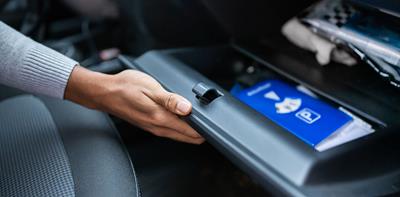
Most of us like to think we are law-abiding citizens. So getting back to your car to find a bright yellow ticket pinned to the windscreen can come as a bit of a surprise. To help you stay on the right side of the law, we’ve created this easy guide to rules of on-street parking.
Who can issue parking tickets?
A parking ticket is usually issued by a traffic warden or a parking attendant. Traffic wardens are employed by the police and issue fixed penalty notices (FPN). Parking attendants are usually employed by the council and issue penalty charge notices (PCN).
In either case, you’ll have 28 days to pay or contest the fine. The amount payable is often halved if you pay within 14 days. If you were caught on camera and issued a notice by post, that deadline increases to 21 days.
What’s the best way to avoid parking fines?
It goes without saying that the best way to avoid getting fined is to always park legally. But there are more ways to break the rules than you might think – there are over 70 ways in which you can be issued a ticket - and a brief moment of carelessness could cause you a hefty fine. The most common ways to get caught out are by parking on double yellow lines, parking in a resident bay without a permit, or not having a valid pay-and-display ticket.
Here are some things to bear in mind:
Signs and road markings
Whether you can or cannot park should be marked and signed clearly on public roads.
If there’s a parking bay - a white box with broken lines - then these tend to be reserved for permit holders or pay-and-display users. Make sure you check the signs as they should also specify the days and times when restrictions apply.
Single yellow lines
You tend to get single yellows on busy routes, and you can’t park on them during certain times. These times are usually signposted, so it should be clear when it’s OK to park. The signs may also stipulate times when you can and can’t load goods.
If no days are specified on the sign, this means restrictions apply on weekends too, and even bank holidays.
Double yellow lines
As a general rule, you can’t park on double yellows at any time. There are some exceptions for loading and picking people up and, if that’s the case, those exemptions will be signposted.
The only other time you can stop on double yellows is when you remain in the car, and only for a reasonable amount of time. For instance, waiting a few minutes to pick somebody up is sometimes permitted. However, a fine might be difficult to contest if you’re caught on camera. The safest thing to do is not stop on double yellow lines at all, if you can help it.
Dropped kerbs
You’re not allowed to park in front of dropped pavements, as it causes an obstruction. These are sometimes obvious, such as where vehicles access businesses or private buildings.
However, there are more dropped kerbs to keep an eye out for. Some kerbs are dropped to allow better access for wheelchairs and other mobility vehicles, pushchairs, and people with visual impairments.
While they’re not always marked on the tarmac, it’s easy to do a quick walk around your car to check you’re not blocking the dropped kerb. Failing to do so could get you a ticket under Highway Code Rule 243. You can even be fined for parking over the dropped kerb in front of your own driveway.
So, it’s always a good idea to check for signs, road markings and the pavement itself, before walking away from your car.
Check your car’s position
If you’re in a parking bay, make sure all your wheels are inside. Just one wheel out could get you a ticket.
Although some local councils may be stricter than others, it’s always best not to park on the pavement - especially in London and other large cities.
You should park entirely on the road, as tight to the kerb as possible. Unless you’re in a bay which allows for more space, you should aim to park within 50 centimetres of the kerb. If you can’t park on the road while leaving enough space for emergency vehicles to get through, it’s better you find somewhere else to park, even if it does mean a longer walk.
Where can I park if I have a disabled Blue Badge?
Blue Badge holders with a registered disability have more leeway when it comes to on-street parking. For example, you can park on yellow lines for up to three hours, provided there aren’t restrictions on loading or unloading. Bear in mind that you should always display your Blue Badge when parking in restricted spaces.
Allowable spaces vary across councils, but you can find out where Blue Badge holders can park in your area here.
By sticking to the rules and paying attention to your surroundings, you can turn safe parking into a habit and avoid a costly fine.
Go to Solved to read more about driving, the rules of the road and road safety.
Original article written in July 2020


